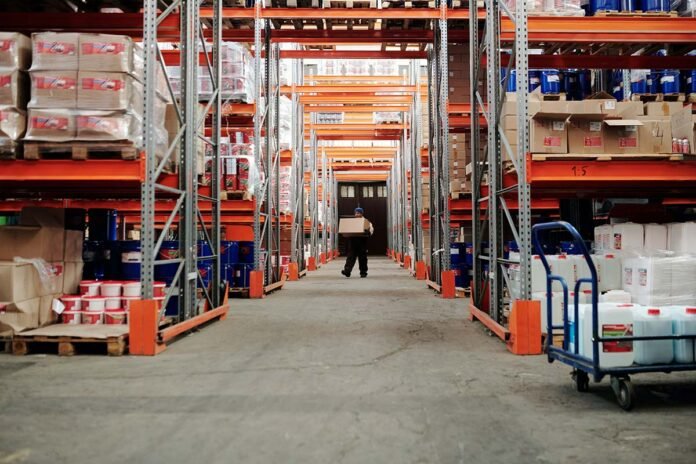Need a smarter way to store products and save space in your warehouse? Push-back racking systems might be exactly what you’re looking for.
These systems make storing goods more efficient without taking up extra room. They use a unique design that allows pallets to slide back on rails, saving time and effort.
If you’re dealing with large volumes of similar products, this setup works wonders. It’s a great fit for warehouses aiming to increase productivity.
Curious to know more? Keep reading to discover how push-back racks can transform your storage operations.
What Is a Push Back Racking System?
A push-back racking system is a type of storage solution that allows pallets to be stored on a sloped rail system. Each time a new pallet is loaded, it pushes the others back, making room at the front. This creates a last-in, first-out (LIFO) arrangement, which works well for many fast-moving products.
The system typically supports two to six pallets deep per lane. It’s a space-saving option that reduces the need for extra aisles.
Key Benefits of Push Back Racks
One major benefit of push-back racks is the ability to store more products in less space. They also reduce the time it takes to load and retrieve items, improving efficiency.
Because forklifts only operate at the aisle face, there’s less chance of product or rack damage. These systems are versatile and can be used with many different pallet types. They also help improve visibility and access to stored items.
Ideal Warehouse Types for Push Back Systems
Push-back racking is great for warehouses with medium to high inventory turnover. It works best in facilities storing multiple pallets of the same product. These racks are commonly used in food and beverage, retail, and general merchandise warehouses.
Companies with seasonal inventory also benefit, as it’s easy to access newer stock. It’s especially useful where floor space is limited but vertical space is available.
How Push Back Racks Save Space
Push back systems use deep storage lanes, allowing more products to fit in less space. They eliminate the need for multiple aisles since pallets move forward automatically. This means fewer forklift travel paths and more room for inventory.
The design supports better cube utilization by stacking higher and deeper. With the use of back racks, businesses can increase their storage density without expanding warehouse size.
Maintenance and Safety Tips
Regular inspections help ensure the system stays safe and effective. Always check for damaged rails, wheels, or pallet supports.
Staff should be trained to load and unload properly to avoid jams. It’s also important to maintain clear aisles to prevent forklift accidents. Following manufacturer guidelines will keep your system running smoothly for years.
When to Choose Push Back Over Other Systems
Choose push-back racking when you need dense storage and your inventory suits the LIFO method. It’s ideal for storing the same SKUs in large quantities.
If you need faster access and fewer aisles, it’s more efficient than selective racking. It also works better than drive-in systems when safety and product damage are concerns. In many cases, the added efficiency justifies the initial cost.
Push Back Racking Systems: A Smart Storage Investment
Push-back racking systems offer a smart and efficient way to handle high-density storage needs. They help warehouse managers save floor space while keeping operations running smoothly.
With easier access, reduced forklift travel, and better use of vertical storage, the benefits are clear. These systems also boost worker safety and protect stored goods. For businesses needing fast, organized pallet access, push-back racks provide the perfect solution.
For more helpful tips, browse our blog regularly!
